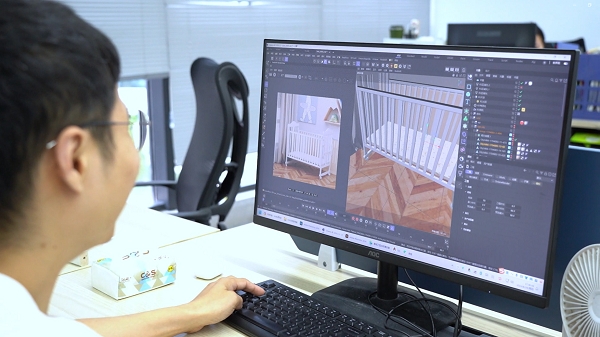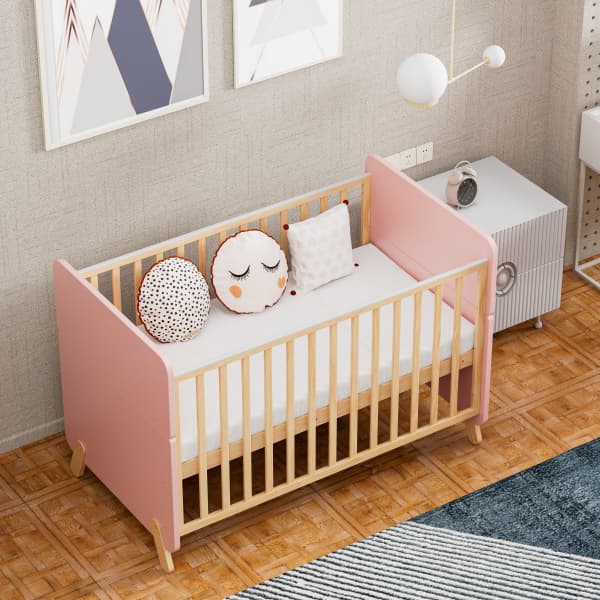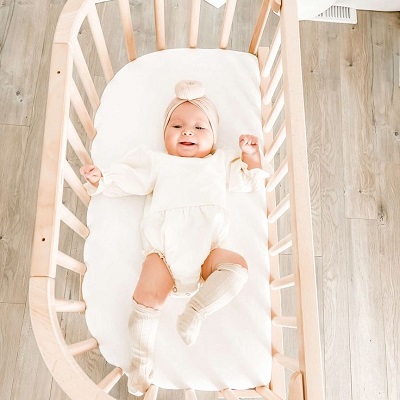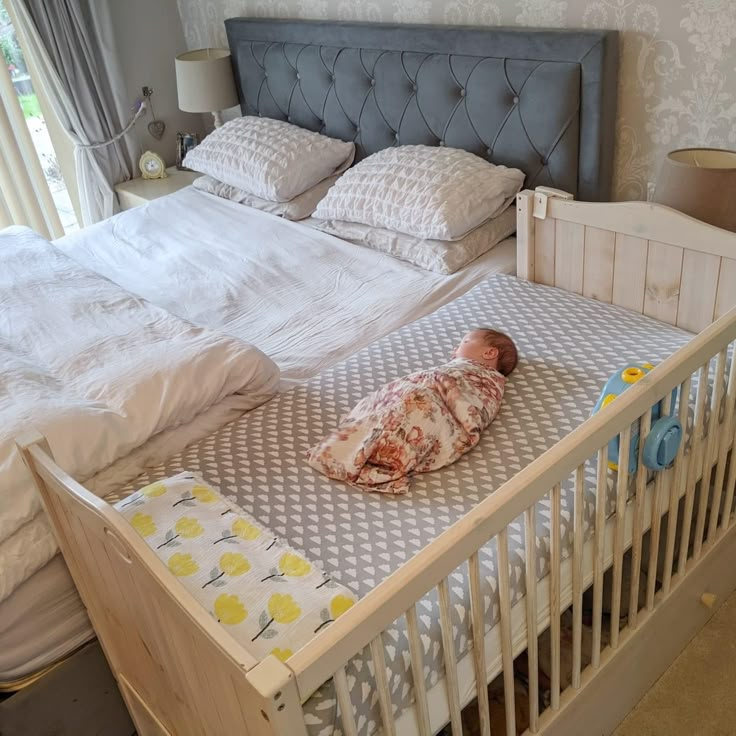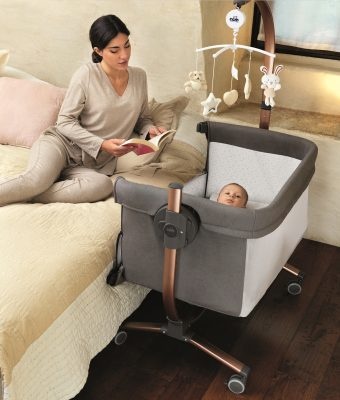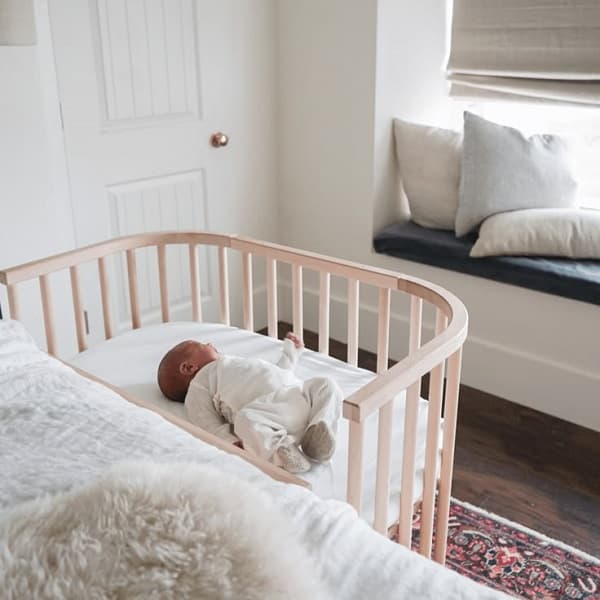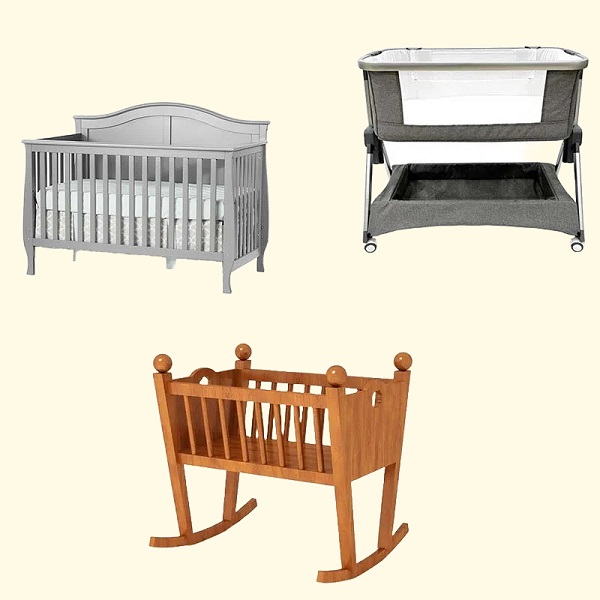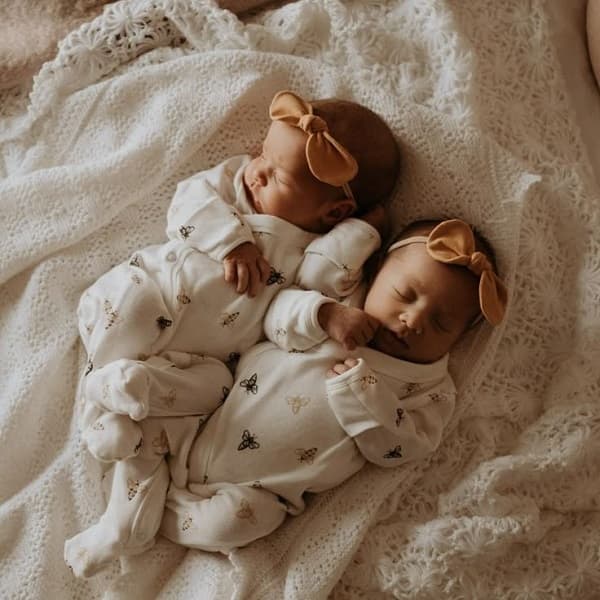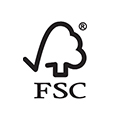Designing a nursery is one of the most joyful—and daunting—tasks for expectant parents. It’s easy to get swept up in Pinterest-perfect themes and adorable decor, but the real purpose of a nursery is to create a safe, functional, and calming space where your baby can sleep, play, and grow.
Every piece of nursery furniture you choose will shape their earliest memories and safeguard their well-being, so balancing style with practicality is key.
Whether you’re working with a cozy corner of a shared room or a dedicated nursery, we’ll walk you through the nursery furniture essentials, highlight non-negotiable safety standards, and share tips to stretch your budget without cutting corners.
What Furniture Should Be in a Nursery?
A nursery doesn’t need to be cluttered, but a few core pieces are essential for safety, comfort, and functionality. Here’s your curated checklist:
1. A Safe, Sturdy Crib
The crib is the heart of the nursery, and it is your baby’s primary sleep space for the first 2–3 years.
✅ Certification: Choose JPMA-certified models meeting ASTM International safety standards.
✅ Slat Spacing: Slats no more than 2.375 inches apart (prevents head/limb entrapment).
✅ Adjustable Mattress Heights: Start at the highest setting for newborns, and lower it as your baby grows.
❌ Avoid: Drop-side cribs (banned in 2011), and secondhand cribs with missing hardware.
2. A Versatile Dresser
Combines storage and diaper-changing functionality, saving space and money. A sturdy dresser anchors the nursery’s organization.
✅ Anti-Tip Straps: Anchor to wall studs to prevent tipping (CPSC reports 1 child dies every 2 weeks from furniture tip-overs).
✅ Safety Stops: Drawers should lock when fully extended to avoid pinched fingers.
✅ Height: Opt for a waist-high dresser to reduce back strain during changes.
❌ Avoid: Overloading drawers—keep heaviest items at the bottom.
3. Comfortable Seating (Glider or Rocking Chair)
A glider or rocking chair is worth the investment for late-night feeds and storytime. Parents spend hours here, so comfort directly impacts your well-being.
✅ Ergonomic Support: Look for lumbar cushions, wide armrests, and smooth recline motion.
✅ Stain-Resistant Fabric: Machine-washable covers are a must for spills and spit-up.
✅ Compact Design: Ensure it fits your space without blocking crib or closet access.
❌ Avoid: Swivel chairs near shelves or windows (entanglement/fall risks).
4. Storage Solutions
Clutter-free nurseries are safer and calmer. Smart storage keeps essentials (diapers, clothes, toys) organized and accessible. Maximize space with:
✅ Under-Crib Bins: Use for outgrown clothes or extra linens (keep lightweight!).
✅ Wall-Mounted Shelves: Secure to studs and place high enough to avoid baby’s reach.
✅ Multi-Functional Furniture: Ottomans with hidden storage or benches with baskets.
❌ Avoid: Over-the-door organizers (pinch hazards) or open bins near crawling babies.
4. Baby Bouncer or Swing
Baby Bouncer or Swing Provides a safe spot to soothe fussy babies or keep them entertained while you fold laundry or take a breather.
✅ Certification: JPMA-certified models with a sturdy, weighted base.
✅ Harness: Always use a 5-point safety strap, even for short periods.
✅ Weight Limits: Follow manufacturer guidelines (most max at 25–30 lbs).
❌ Avoid: Placing near stairs, cords, or unsupervised on elevated surfaces.
Choosing Furniture That Grows with Your Baby
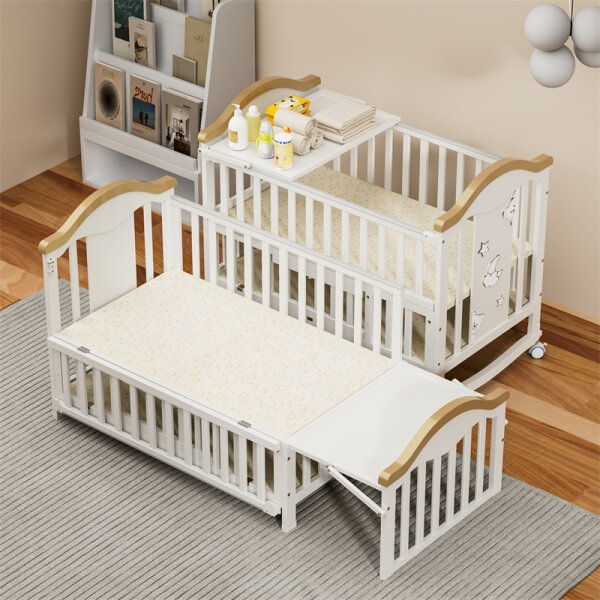
Babies grow faster than Amazon delivery. One day they’re swaddled newborns, the next they’re scaling the crib bars like tiny parkour artists. Furniture that can’t keep up? It’ll leave you broke, frustrated, and stuck with a landfill’s worth of outgrown gear. Here’s why investing in adaptable furniture isn’t just smart—it’s sanity-saving.
The convertible feature means you no longer have to stumble over piles of swings or bassinets that no longer fit your child. Plus, you’ll dodge the eco-guilt of tossing barely-used furniture.
Not all furniture is cut out for the long haul. These heroes adapt with your child—not against them:
Culla convertibile
What It Does: Morphs from crib → toddler bed → daybed → full-sized bed (some even turn into desks!).
Why It’s Worth It: You can skip the toddler crib phase (a pricey pitstop). And it can grow with siblings—no buying new cribs for baby #2.
Multifunctional Dresser
What It Does: Starts as a diaper-changing station, evolves into clothes storage, then becomes a craft supply hub for grade school.
Why It’s Worth It: A dresser with a removable changing topper becomes a timeless storage unit.
Gliders with Removable Cushions
What It Does: Starts as a midnight feeding throne, becomes a storytime snuggle spot, then retires to your home office.
Why It’s Worth It: Skip the cheap rocker that squeaks and sags after 6 months.
Modular Storage That Shifts with Phases
What It Does: Cube organizers, wall shelves, and under-bed bins rearrange as needs change.
Why It’s Worth It:
- Baby Phase: Store diapers, swaddles, and burp cloths.
- Toddler Phase: Organize toys, books, and art supplies.
- Teen Phase: Shelves display soccer trophies and manga collections.
Choose Eco-Friendly & Non-toxic Nursery Furniture
Your baby’s nursery should be their safest space—not a hidden source of toxins. From off-gassing glues to chemical-laced fabrics, conventional furniture can harm tiny lungs and sensitive skin.
Infants take 2–3 times more breaths per minute than adults, inhaling more airborne chemicals. Plus, crib mattresses, glider fabrics, and even dresser finishes transfer toxins through the touch. So, what to look for:
1. Materials That Don’t Harm
- Solid Wood: FSC-certified oak, maple, or bamboo (no formaldehyde-based glues).
- Natural Fabrics: Organic cotton, linen, or hemp for crib sheets, glider cushions, and curtains.
- Safe Finishes: Water-based paints or natural oils (tung, beeswax) instead of VOC-laden stains.
2. Certifications to Trust
- GREENGUARD Gold: Ensures low chemical emissions (look for cribs, mattresses, and dressers).
- OEKO-TEX Standard 100: Guarantees fabrics are free from harmful dyes and pesticides.
- GOTS (Global Organic Textile Standard): For organic textiles like bedding and curtains.
3. Secondhand Done Safely
Refinish a solid wood dresser with non-toxic sealant (skip anything painted pre-1978—lead risk). You should avoid particleboard, even freebies aren’t worth the off-gassing. After getting second-hand baby furniture, use vinegar, baking soda, or plant-based cleaners to strip residues.
How to Get the Best Value for Money?

You should allocate the largest portion of your budget to items directly impacting safety and daily use, such as cribs, mattresses, and more, which are non-negotiable investments.
Versatile pieces reduce the need for frequent replacements, offering better long-term value. So try to choose furniture that matches your child’s growth stage. Also, opt for classic colors (white, natural wood) and simple styles that complement changing decor.
When is the best time to buy? Black Friday, Memorial Day, and Prime Day often feature discounts on high-quality furniture. Many baby registries offer 10–15% off remaining items as your due date approaches.
You can also repurpose household items to save space and money while reducing clutter. For example:
- Dresser as Changing Table: Add a padded topper to a sturdy dresser instead of buying a standalone changer.
- Ottomans with Storage: Serve as seating, footrests, and toy storage.
- Use a sturdy dining chair as a temporary glider.
- Convert a bookshelf into a diaper station with bins.
Simple, functional designs remain useful longer and align with developmental needs.If you don’t have a strong personal preference, you should avoid these money traps because they’re flashy:
- Themed furniture: Themes quickly become outdated as your child’s interests evolve.
- Nice gadgets: Wi-Fi-connected cribs? Save the cash for diapers.
- Matching sets: Nurseries look cohesive with coordinated pieces, not identical ones.
Final Checklist for Value:
✅ Prioritize safety certifications (JPMA, GREENGUARD Gold).
✅ Opt for neutral, adaptable designs over trendy styles.
✅ Hunt sales and secondhand gems (with caution).
✅ Track sales and registry discounts for major purchases.
❌ Avoid trends that’ll feel dated in 6 months.
When Should You Start Buying Furniture for a Nursery?
Nesting instincts hit hard during pregnancy, but timing your nursery prep can mean the difference between a serene setup and a last-minute panic. Here’s how to nail your timeline without burning out:
First Trimester (Weeks 1–12): Research and Planning
Understand Safety Standards: Familiarize yourself with certifications like JPMA and ASTM International. Bookmark resources from the CPSC for recalls and guidelines.
Measure the Space: Note room dimensions, window placements, and electrical outlets. Use free tools like Room Planner to visualize layouts.
Set a Realistic Budget: Allocate funds to essentials first (crib, dresser, mattress) and decor secondarily.
Avoid: Impulse purchases. Focus on gathering information rather than buying prematurely.
Second Trimester (Weeks 13–27): Strategic Purchasing
Why does this window work best? Many parents find this period ideal for tasks, as early pregnancy fatigue subsides and mobility is still comfortable. In addition, furniture like cribs and dressers often require 8–12 weeks for delivery. Ordering early ensures readiness before the third trimester. There are priorities:
Crib and Mattress: Prioritize JPMA-certified models with adjustable height settings. Lettini trasformabili offer long-term value.
Dresser with Changing Topper: Choose sturdy, anchor-ready designs.
Comfortable Seating: Test gliders or rocking chairs in-store for ergonomic support.
Third Trimester (Weeks 28–40): Final Preparations
Assemble Furniture Early: Enlist helps to build and anchor cribs, dressers, and shelves.
Allow for Ventilation: Place new furniture in the nursery 2–3 weeks before the due date to reduce chemical off-gassing.
Babyproof the Space: Secure cords, install outlet covers, and double-check furniture anchors.
Avoid: Non-essential decor projects. Focus on functionality and safety.
Conclusione
Designing a nursery is an act of love, blending practicality with care. Certifications, non-toxic materials, and anchored baby furniture are non-negotiable. These choices protect your child during their most vulnerable years.
You know your family’s needs best. If a piece feels unsafe or impractical, prioritize alternatives. Nurseries will change as your child grows—toys will accumulate, walls may acquire crayon art, and preferences will shift. What matters most is creating a secure, loving environment where your child feels cherished.
Clafbebe has experienced nursery furniture designers and has built its own large-scale factory specializing in the production of all types of high-quality baby furniture. Contact Clafbebe for expert solutions!
Articoli correlati consigliati:
- Come importare mobili per bambini dalla Cina?
- Mobili per bambini per piccoli spazi: come ottimizzare la stanza dei bambini
- I 10 migliori produttori di mobili per bambini in Cina
- I 12 migliori produttori di mobili per bambini negli Stati Uniti
- I 12 migliori produttori di mobili per bambini nel 2025
- Esplorando 11 diversi tipi di mobili per bambini

